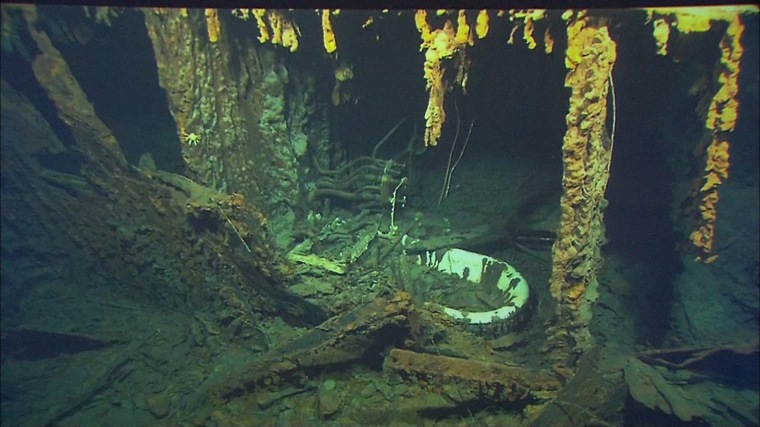The first footage of the Titanic wreck in 14 years shows spooky images of the legendary ship dissolving into the sea from the effects of salt water, strong currents and metal-eating bacteria.
An expedition of five dives over eight days earlier this month, led by renowned explorer Victor Vescovo, found the ocean liner that famously sank in 1912 is now covered in bacteria eroding the ship's iron.
The exploration team dove more than 12,000 feet down in bitterly cold water in the Atlantic Ocean in a specially-designed submersible that took a Florida company three years to build.
The aim was to capture video footage for a National Geographic documentary as well as computer imagery to create 3-D models of the ship.
They found that famous parts of the ship, like the bow from the iconic "I'm the king of the world!" scene in the 1997 blockbuster movie "Titanic," have been dramatically eroded by bacteria.
The famous bathtub in the captain's quarters has also disappeared under a collapsing deck, the exploration team said in a news release by Atlantic Productions.
"The most shocking area of deterioration was the starboard side of the officer’s quarters, where the captain’s quarters were,'' Titanic historian Parks Stephenson said in a statement. "Captain’s bath tub is a favorite image among the Titanic enthusiasts, and that’s now gone. That whole deck hole on that side is collapsing taking with it the staterooms, and the deterioration is going to continue advancing."

The Titanic set sail on April 12, 1912 from Southampton, England, on a maiden voyage to New York with 2,200 passengers and crew before colliding with an iceberg 370 miles south of Newfoundland two days later. More than 1,500 people died after the ship broke in two and sank the next day.
The team of explorers laid a wreath and held a short ceremony in honor of those who died in the wreck.
"It was extraordinary to see it all, and the most amazing moment came when I was going along the side of the Titanic and the bright lights of the submersible reflected off a portal and came right back, it was like the ship was winking at me,'' Vescovo said in a statement. "It was amazing.”
The imagery captured during the exploration will also be used to predict how long it may be until the Titanic completely disappears.
"The future of the wreck is going to continue to deteriorate over time, it’s a natural process,'' scientist Lori Johnson said in a statement. "These are natural types of bacteria, so the reason that the deterioration process ends up being quite a bit faster, is a group of bacteria, a community working symbiotically to eat, if you will, the iron and the sulphur."